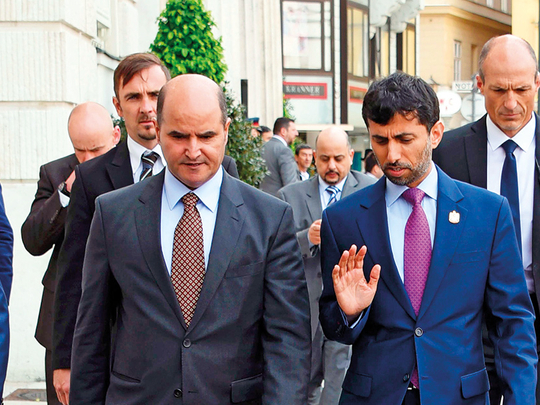
Abu Dhabi: Organisation of the Petroleum Exporting Countries (Opec) member countries are expected to extend the production cut deal beyond June when they meet in Vienna on Thursday, but the market will be looking at the extent of the cut even as additional supplies from the US strategic reserves threaten to disrupt the whole supply, demand equation.
Oil prices rose on Wednesday in anticipation of the extension of the deal with global benchmark Brent trading at $54.47 (Dh200) per barrel, up by 0.59 per cent and US crude West Texas Intermediate at $51.74 per barrel, up by 0.52 per cent at 1pm UAE time.
Thirteen members of the Opec and eleven non-Opec members agreed to cut production by about 1.8 million barrels a day to prop up oil prices in December last year.
Opec agreed to slash output by 1.2 million barrels a day and non-Opec members led by Russia promised to cut 558,000 barrels a day. The agreement came into effect from January 1 with high compliance reported among oil-producing countries.
“Some of the bigger producers have managed to achieve consensus about rolling over the production cuts and what’s really going to be up for debate is for how long that is going to be, whether it would be for six months or nine months,” Edward Bell, commodity analyst at Emirates NBD told Gulf News over phone.
He said Saudi Arabia, Kuwait and Algeria are pitching for a nine-month extension but Iraq is reluctant to support the deal for nine months although they are in favour of prolonging it beyond June. Russia, one of the largest producers of crude oil in the world is also endorsing a nine-month extension.
“Compliance will be in focus again once the deal gets extension. If there is any slippage in terms of production cuts, it is going to undermine the whole deal and it means the balancing of oil markets is going to be pushed out even further.”
“If the Brent remains between $47 per barrel to $55 per barrel, compliance would be pretty good but if the oil price goes up to $60 barrel, which is unlikely, compliance would start to weaken as some countries might increase output to take advantage of the oil price rally.”
There is not going to be a significant change in oil prices if the agreement is extended as extension of the cuts is already baked into the oil price, he added.
US strategic reserves
When asked whether the US plans to sell part of its strategic reserves would have any impact on oil markets and Opec production, he said it is just a proposal and needs to be debated in congress.
“They are not going to sell half of the strategic reserve all in one go but they are going to stretch it out over several years, almost a decade. In terms of the impact on the markets, it is not going to be significant.”
Spencer Welch, an Opec expert and Director of IHS Energy based in London, said there is still a risk of the deal falling apart as Russia and Iraq still have not fully complied and Saudi Arabia has clearly said they will only do if all comply on production cuts.
“The deal although remarkably successful so far [in terms of compliance, not in terms of reducing global oil inventories] is fragile. Russia and Iraq still have not fully complied with what was promised and Saudi Arabia has clearly said they will only do this if all comply.”
He however expects the deal to be extended until the end of this year with possibility of extension to the end of first quarter of 2018.
“Shale oil production will keep on rising no matter what Opec does, but Opec decision will impact the rate of shale oil production rise.”












